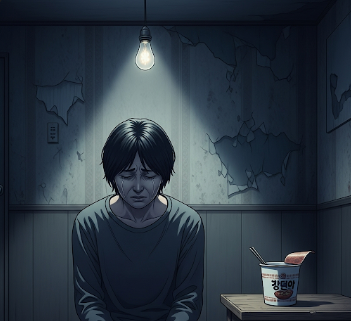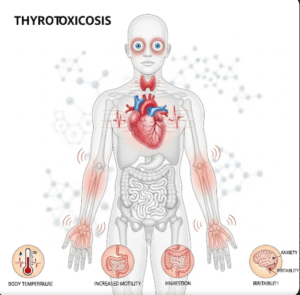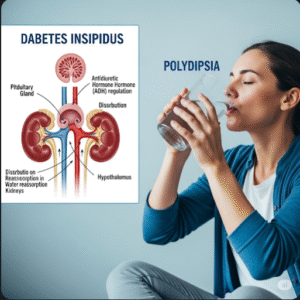➤ Overview
Suicidal ideation refers to thinking about, considering, or planning suicide. It is a serious mental health concern that affects individuals of all ages and backgrounds. These thoughts may range from passive consideration (“I wish I weren’t here”) to active planning of ending one’s life.
In South Korea, suicidal ideation is a critical public health issue, with mental health professionals, psychiatrists, and crisis counselors providing early intervention, therapy, and support. Prompt attention can prevent suicide attempts and improve overall mental well-being.
➤ Key Facts
→ Suicidal ideation is not the same as suicide attempts but is a significant warning sign.
→ It is often associated with mental health disorders, including depression, bipolar disorder, and anxiety disorders.
→ In Korea, mental health services include psychiatric evaluation, counseling, and crisis hotlines.
→ Risk factors include stress, trauma, social isolation, chronic illness, and substance abuse.
→ Early recognition and intervention can save lives and promote recovery.
→ Symptoms may fluctuate over time, with periods of intense thoughts and relative calm.
→ Family, friends, and healthcare providers play a crucial role in support and detection.
➤ What is Suicidal Ideation?
Suicidal ideation involves thoughts about wanting to die or end one’s life, which may vary in intensity:
→ Passive suicidal ideation – Thoughts like “I wish I could disappear” without a concrete plan.
→ Active suicidal ideation – Includes planning or intent to commit suicide, sometimes with methods considered.
→ Chronic vs. acute – Thoughts may be persistent over months or appear suddenly during crises.
→ Indicator of underlying distress – Often a symptom of depression, trauma, or severe stress.
Korean mental health specialists emphasize assessment of severity, risk factors, and protective factors to guide timely intervention.
➤ What Symptoms are Related to Suicidal Ideation?
Suicidal ideation often occurs alongside emotional, behavioral, and physical symptoms:
→ Persistent sadness, hopelessness, or worthlessness.
→ Loss of interest in activities previously enjoyed.
→ Withdrawal from family, friends, or social interactions.
→ Changes in sleep or appetite, including insomnia or overeating.
→ Fatigue, low energy, or physical complaints without clear medical causes.
→ Impulsive or self-destructive behaviors – Risky actions, substance misuse.
→ Talking about death, dying, or feeling like a burden.
→ Mood swings or irritability that affect daily functioning.
➤ What Causes / Possible Causes?
Suicidal ideation arises from a complex interplay of psychological, social, and biological factors:
→ Mental health disorders – Depression, bipolar disorder, schizophrenia, PTSD.
→ Trauma or abuse – Physical, emotional, or sexual abuse.
→ Chronic illness or pain – Long-term medical conditions causing distress.
→ Substance abuse – Alcohol or drug dependency increasing impulsivity.
→ Stressful life events – Job loss, financial strain, relationship problems.
→ Social isolation – Loneliness, lack of support networks.
→ Family history of suicide – Genetic or environmental predisposition.
→ Cultural or societal pressures – Academic, career, or societal expectations in Korea.
→ Neurobiological factors – Imbalances in neurotransmitters affecting mood regulation.
➤ When Should I See My Doctor?
Immediate professional help is required if suicidal thoughts are present, especially with the following warning signs:
→ Active planning or intent to end one’s life.
→ Access to means – Medications, firearms, or other lethal tools.
→ Severe hopelessness or helplessness.
→ Withdrawal from social supports and isolation.
→ Previous suicide attempts or self-harming behavior.
→ Severe agitation, anxiety, or impulsivity.
→ Inability to cope with daily life or perform normal activities.
In emergencies, contact hotlines, emergency services, or visit a hospital immediately. In Korea, the Korea Suicide Prevention Center (1393) is available for immediate assistance.
➤ Care and Treatment
Management of suicidal ideation focuses on safety, therapy, and addressing underlying causes:
→ Immediate safety planning – Remove or limit access to means of self-harm.
→ Psychotherapy – Cognitive behavioral therapy (CBT), dialectical behavior therapy (DBT), and supportive counseling.
→ Medication – Antidepressants, mood stabilizers, or anxiolytics under psychiatric supervision.
→ Crisis intervention – Hotlines, emergency counseling, and inpatient care if needed.
→ Social support – Family, friends, peer support groups, and community resources.
→ Monitoring and follow-up – Regular psychiatric evaluation and risk assessment.
→ Lifestyle modifications – Sleep hygiene, physical activity, mindfulness, and stress management.
→ Addressing coexisting conditions – Treatment for depression, anxiety, substance abuse, or trauma.
➤ Treatment Options in Korea
South Korea offers comprehensive mental health services for individuals experiencing suicidal ideation:
Diagnosis in Korea
→ Psychiatric evaluation including clinical interviews, risk assessments, and psychological testing.
→ Screening for coexisting mental health disorders such as depression or anxiety.
→ Laboratory tests if medications or medical conditions contribute to mood disturbances.
Medical Treatments in Korea
→ Prescription antidepressants, mood stabilizers, or antipsychotic medications as needed.
→ Psychotherapy sessions with trained psychiatrists or clinical psychologists.
→ Crisis management through 24/7 hotlines and hospital-based interventions.
Advanced Therapies in Korea
→ Inpatient psychiatric care for high-risk patients.
→ Group therapy and rehabilitation programs promoting coping skills and resilience.
→ Integrative approaches combining Western psychiatry with traditional Korean therapies for mental wellness.
Rehabilitation & Support in Korea
→ Education on coping strategies, stress management, and relapse prevention.
→ Long-term follow-up with mental health professionals and support networks.
→ Community programs for reintegration, peer support, and social connection.













